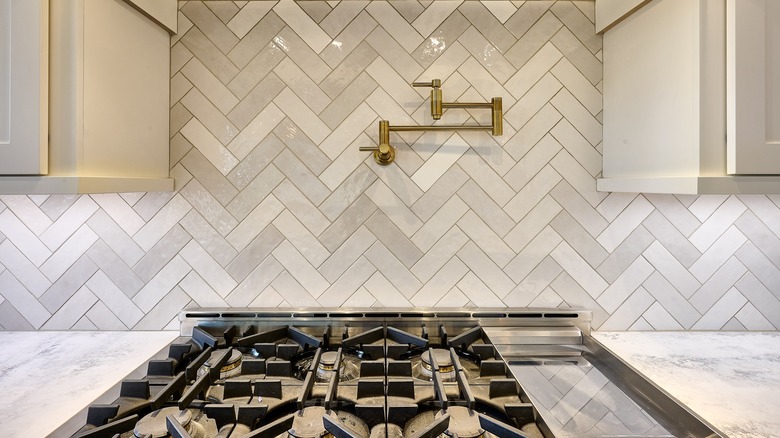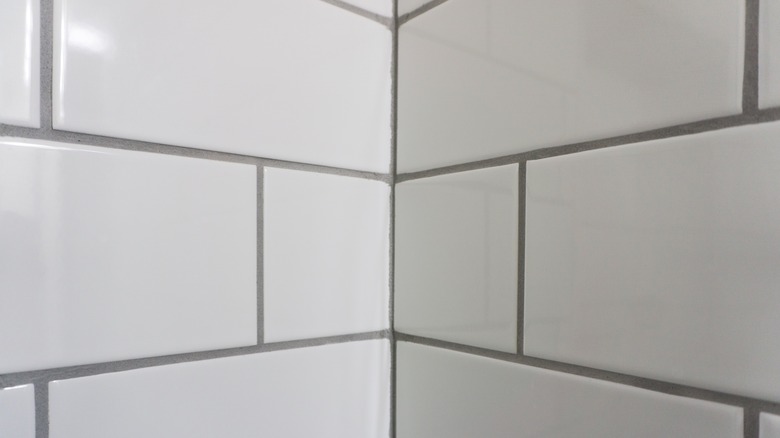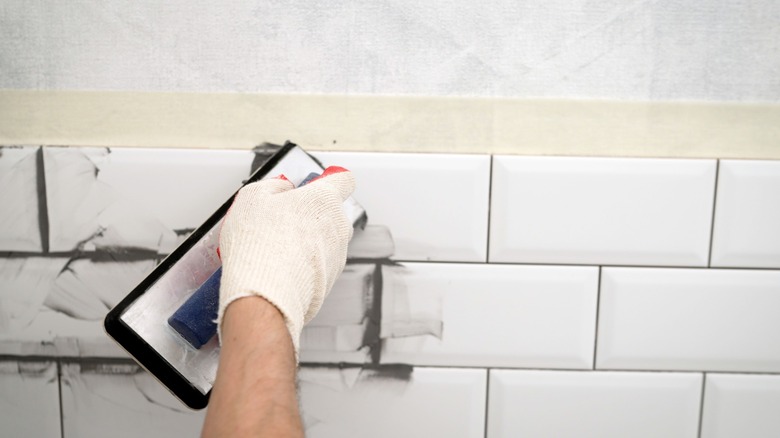Key Details To Keep In Mind If You Are Eying Gray Grout
We may receive a commission on purchases made from links.
If you're considering adding gray grout to your tiles, then chances are you're looking to create a modern and fresh space. The cool color adds something unexpected to the room, bypassing the usual white grout choice to add some extra dimension and depth. While it's a solid pick, there are still some key details to keep in mind before running to the hardware store and buying a tub. Just like with any other design choice, gray grout comes with pros and cons. You will want to weigh them carefully to decide if it's the right color for not only your space but the tiles you have chosen.
The gray shade is very versatile, which is why it can work on anything from shower tiles to kitchen backsplashes to foyer floor tiles. However, the color can be something of a wildcard since it can change the shade of your tiles. That means if you're not careful, your white and airy tile can come across as more gray than cream at the end of the day. Choosing the right grout color for your tile isn't easy, but here are key details to consider before plunging in with your grout float.
Pros of gray grout
Gray grout is considered a softer alternative to black, especially when pairing it with subway tiles. Rather than creating a stark contrast with strong lines, it creates a more subdued effect, which is perfect for rooms you would like to make airy and serene rather than bold or architectural. Because it's softer, it also makes a small room look larger. For example, say you have a small condo kitchen or a cramped primary bathroom. Rather than taking up visual space with black or colorful grout, you can soften the lines between the tiles with gray, making it appear less crowded and, thus, more spacious.
Another pro of gray grout is that it is much easier to maintain than white grout. The white version is guaranteed to stain over time due to use in such high-traffic areas such as bathrooms and kitchens. If you don't like the idea of scrubbing each individual grout line to keep it bright and clean, then gray is a more manageable alternative. It won't show discoloration as clearly, making it less maintenance.
Cons of gray grout
One of the major cons of gray grout could be viewed as a positive — it all depends on how good you are at making decisions. One of its biggest drawbacks is that there are a ton of different shades of gray to choose from, and each variation has the potential to change the color of your tile. If you have a hard time making decisions and experience decision paralysis when faced with too many options, this can be an issue.
For example, if you want to pair your off-white tile with gray grout, that color will change in shade depending on which gray hue you pick. If you choose light pewter, the white shades in the tile will become more prominent, making the finished wall or flooring appear airier. However, if you choose a deep gray grout color, the darker shades in the tile will be accented, making it appear more gray than white. To help you make the right decision, try to use a free tile visualizer program on your phone, such as these from Best Tile or Home Depot. (Most tile retailers offer this technology, so check the site you're buying from.) You can choose the tile you plan to buy and then match it with different gray grout shades, seeing how it will shift in color. You can also upload a photo of the room you want to install it in, giving you a clearer understanding of which gray shade suits the space best.


